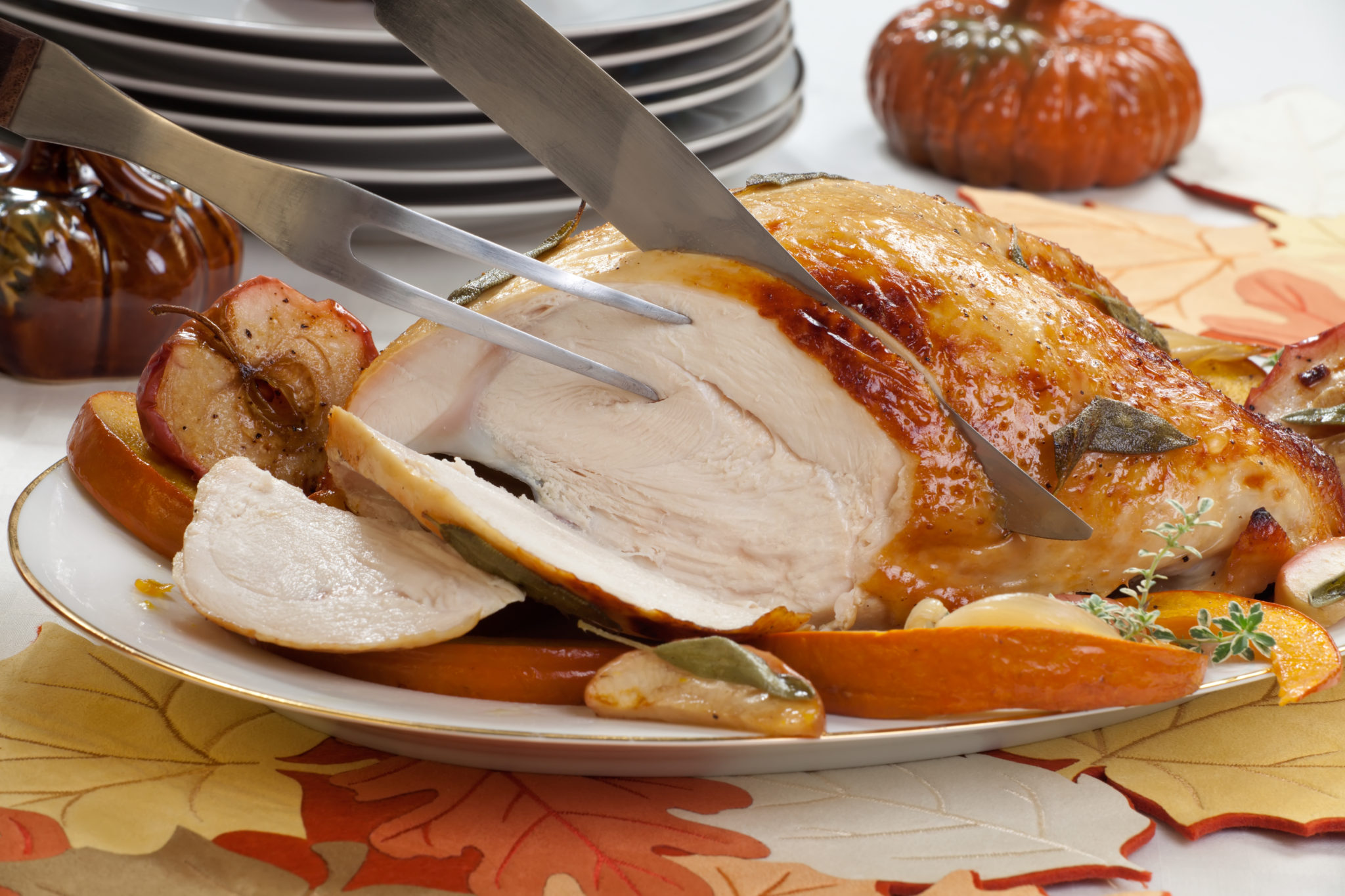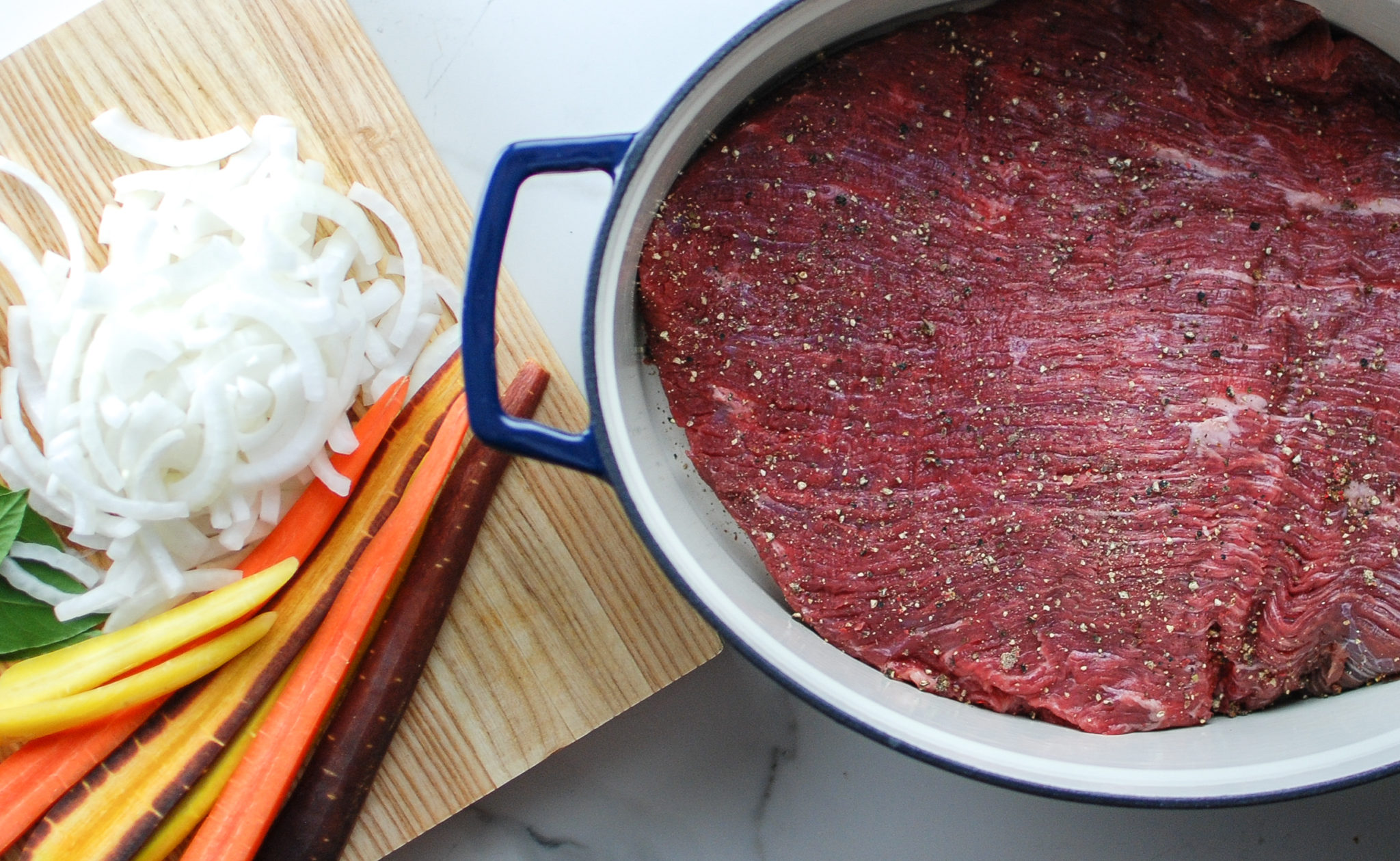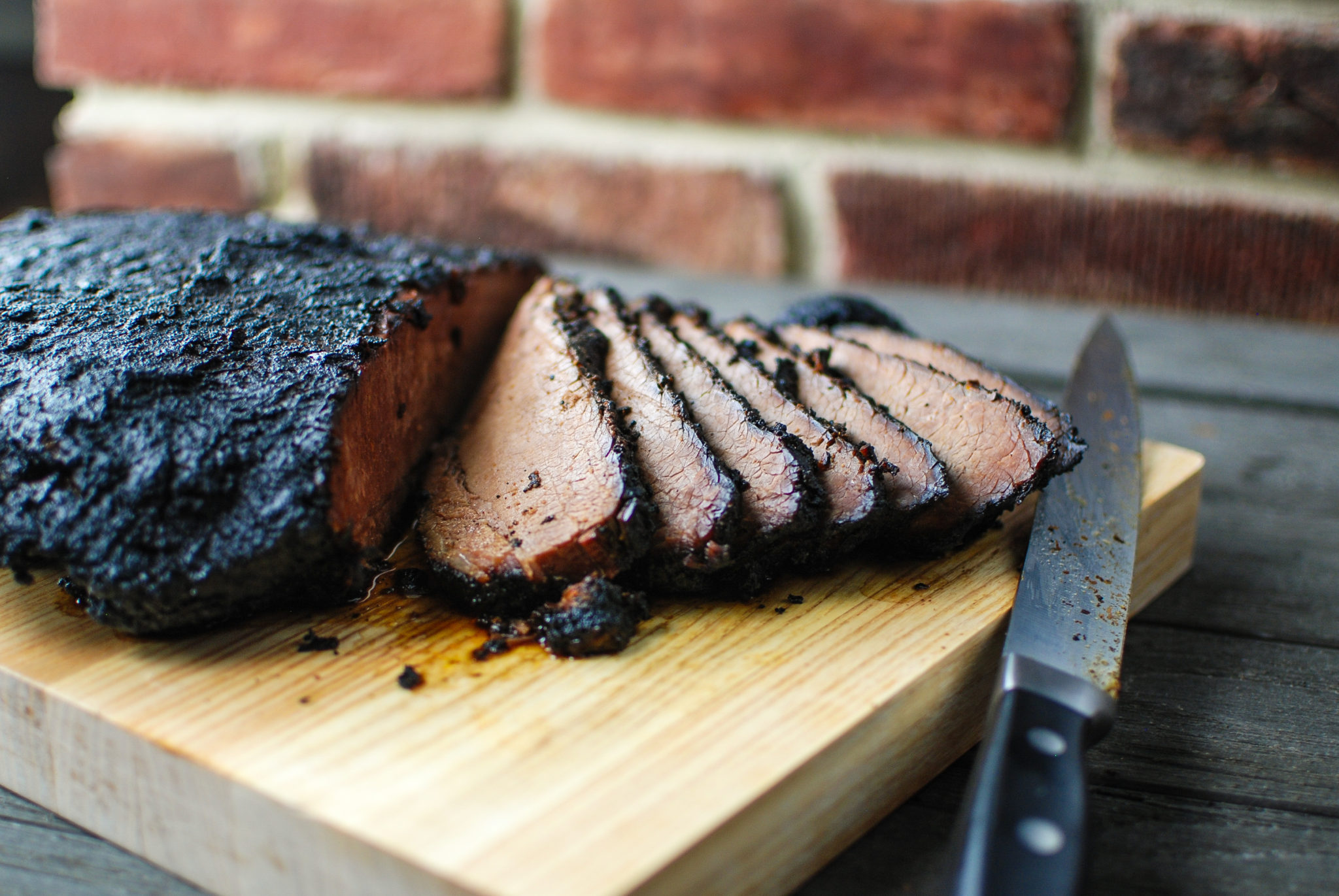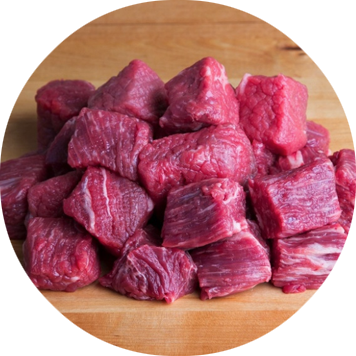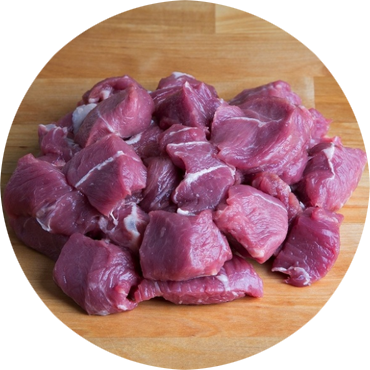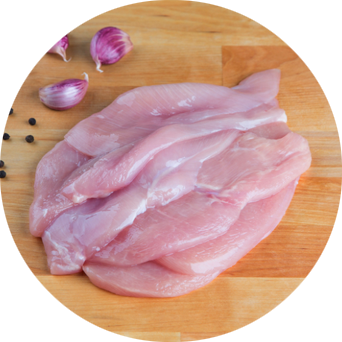Ever wonder why some meats are bright red in their package, and some are darker brown — and why they turn red upon being opened? It’s completely normal — but it can cause concern if you’re not sure what’s up. Here’s the science that affects the color of raw meat under vacuum sealing, and what to look for to ensure your meat is ready to enjoy.
The science: What color is raw meat, anyway?
The color of raw meat depends the kind of muscle, the age of the animal, its diet and exercise, the conditions at packaging and during storage — and to complicate things further, it is perfectly normal for the color change over time.
The USDA explains that the protein myoglobin, is a key factor in the color of red meat:
Myoglobin, a protein, is responsible for the majority of the red color. Myoglobin doesn’t circulate in the blood but is fixed in the tissue cells and is purplish in color. When it is mixed with oxygen, it becomes oxymyoglobin and produces a bright red color. The remaining color comes from the hemoglobin which occurs mainly in the circulating blood, but a small amount can be found in the tissues after slaughter.
Color is also influenced by the age of the animal, the species, sex, diet, and even the exercise it gets….Exercised muscles are always darker in color, which means the same animal can have variations of color in its muscles.
How packaging affects the color of the meat
It turns out that the color we associate with the surface of meats (i.e., cherry-red for beef; dark cherry-red for lamb; and pale pink for veal) is highly unstable and short-lived. The reason? Meat changes color depending on how much oxygen is around it. As the USDA explains, “when meat is fresh and protected from contact with air (such as in vacuum packages), it has the purple-red color that comes from myoglobin… When exposed to air, myoglobin forms the pigment, oxymyoglobin, which gives meat a pleasingly cherry-red color.” This is what we call “blooming” — when you open your vacuum-sealed package and the meat brightens with exposure to oxygen (this can take anywhere from 5-30 minutes, and may not occur evenly over the surface of the meat).
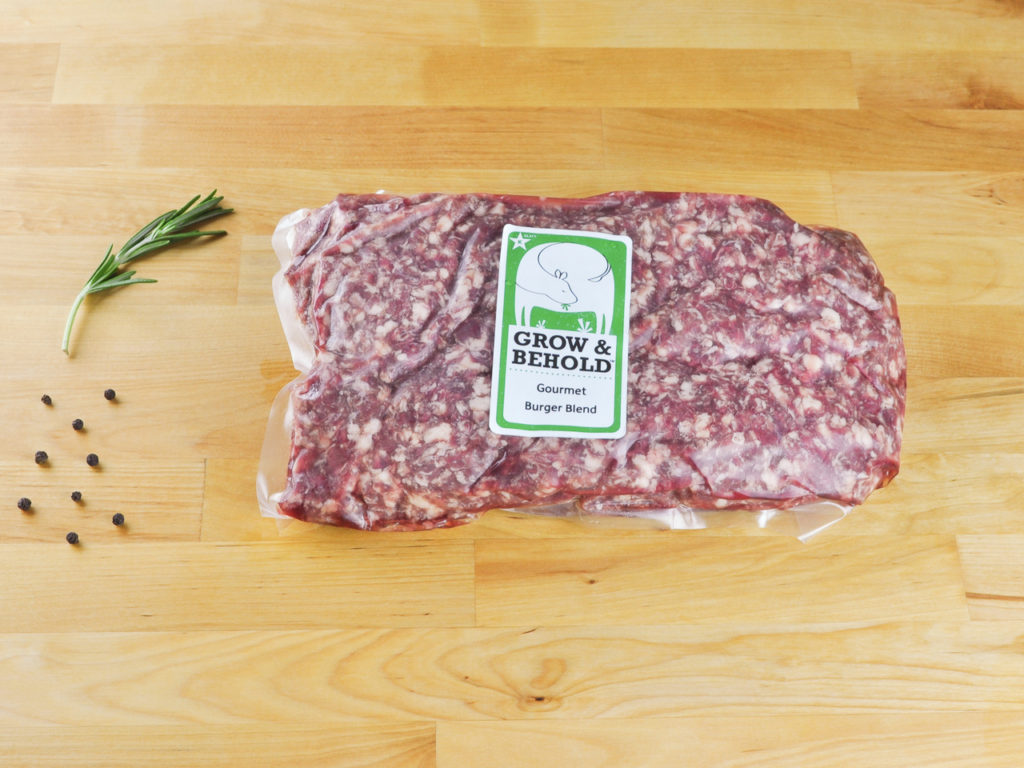
When still in its package, our Premium Burger Blend is reddish-brown
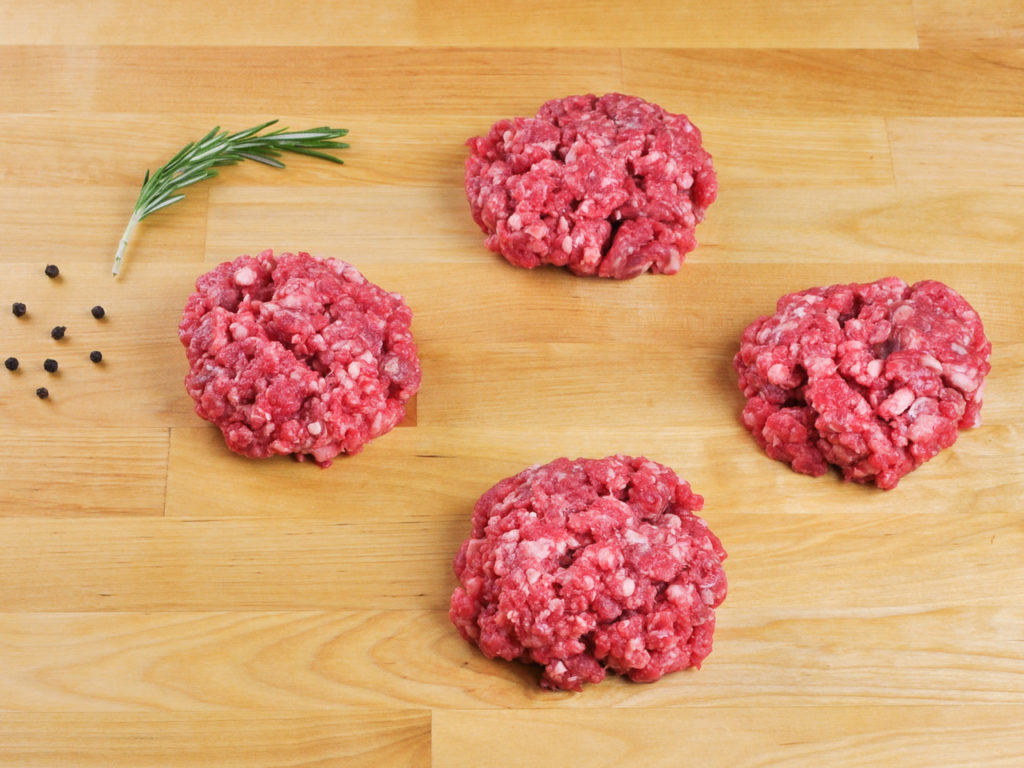
After being unwrapped, the meat “blooms” (reacts with the oxygen in the air) and is bright red
Why the color is different, even before I open the package?
The color of meat is affected by how much oxygen is present to react with the myglobin in the meat. The color of the beef in the package is not an indication of freshness– it’s just an indicator of how much oxygen was in the package at the time of vacuum sealing, and the rate of freezing.
Top Signs Your Meat is 100% Great to Enjoy
- It smells…like not much. Spoiled meat has a strong, unpleasant aroma. If your meat is fresh and has very little smell, it’s safe.
- It’s moist, but not overly slippery or slimy. This can indicate spoilage.
Things you might see that are NOT cause for concern
- Dark blue or green smudges — this is food-safe ink from the USDA inspection stamp. It is quite literally a “mark of quality”. While it is usually found on the outer layers of primal cuts, and therefore rarely remains on the butchered final product, you may see it on your meat. It is not spoilage, mold or cause for concern.
- The metal kosher clip on poultry
Signs your meat should not, in fact, be consumed:
- It smells bad. Seriously — if meat has spoiled, you will know.
- It is slimy, sticky or tacky.
Want to learn more?
Check out the USDA’s post “The Color of Meat and Poultry” here. Still have questions? Please be in touch with us at info@growandbehold.com or 888-790-5781. We are here to ensure you are completely satisfied with your Grow & Behold meats.


